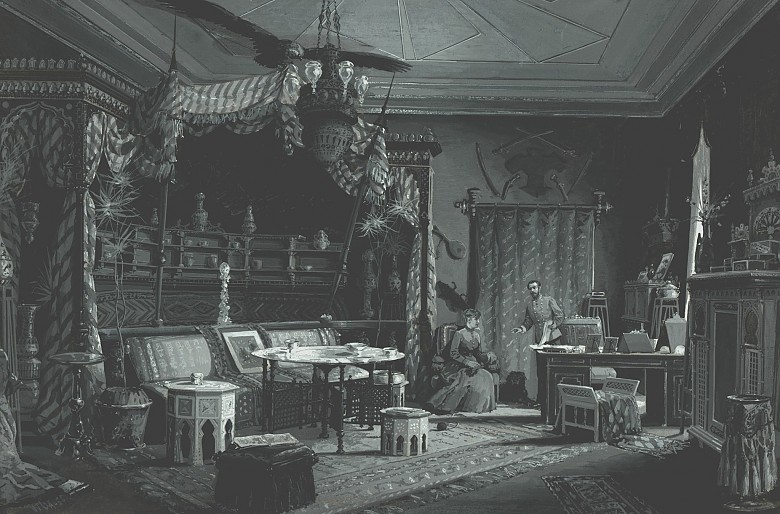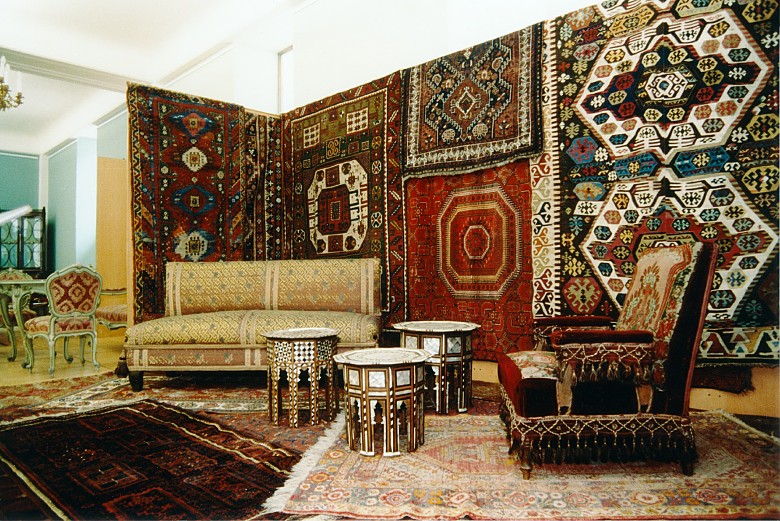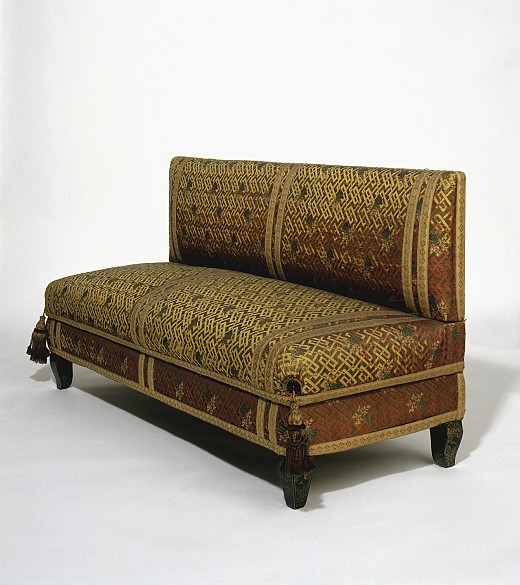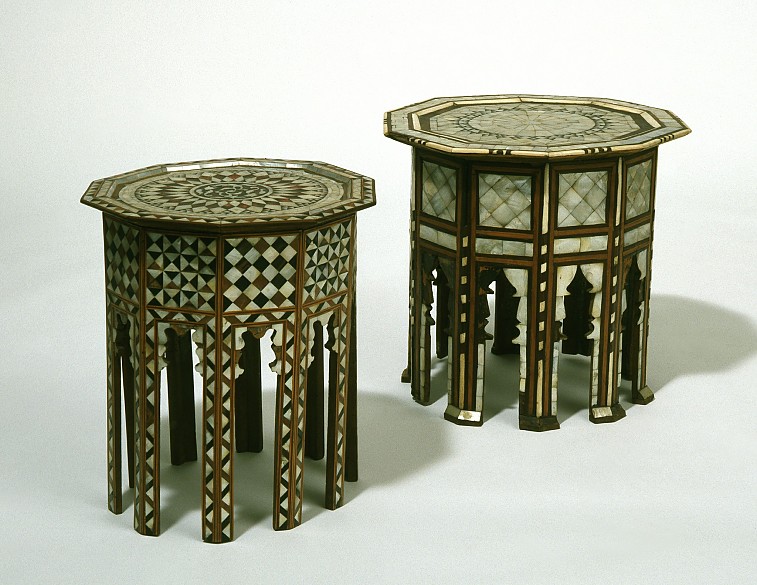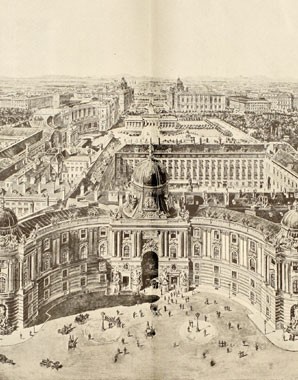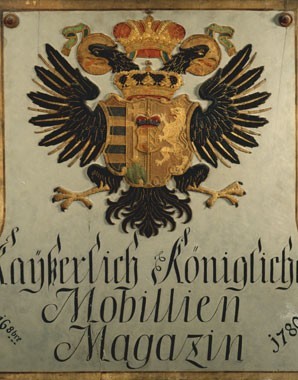A ‘Turkish Salon’ in the Vienna Hofburg
While the Court clung to the Blondel style, Archduke Rudolf preferred the oriental look and had a ‘Turkish Room’ furnished for himself.
Allgemeine Illustrierte Zeitung, 1886.In the other state rooms no feeling of comfort can arise; one does not have the impression that they are lived in. … The study is different. This is the real home of the Crown Prince … All the hundred little details that make even the most stately room homely, speak of a refined sense of beauty. … Oriental rugs form the most important and finest part of the décor as a whole. … In the left-hand corner of the room is a gallery with a balustrade and benches over which are spread Persian rugs. The tent-like ceiling drapes are held together by the talons of a colossal eagle. Two large cushions mounted as donkey-panniers form the back of the divan. In front of the divan stands an Arabian smoking table with a large, solid silver top displaying intricate engraving, and arranged around the table are several Turkish tabourets with intarsia work in silver, ivory and mother-of-pearl. … On the wall between the two windows stands an oriental cabinet with all kinds of smoking apparatus.
In the 1880s a ‘Gobelin Salon’ in the Vienna Hofburg was redecorated and furnished for the crown prince according to his instructions and taste: he desired a gentleman’s study in the oriental style. A detailed description of the furnishing and décor of the ‘Turkish Salon’ as it came to be known appeared in the Allgemeine Illustrierte Zeitung in 1886.
Within the apartments of the Hofburg, this room acquired a special status, as it represented the personal taste of the crown prince. In the inventory of his estate which contains 151 separate objects, the furnishings of the ‘Turkish Room’ are meticulously listed: rugs, divans, armchairs, Turkish stools and personal mementoes such as weapons. The model for this kind of interior decoration was the ‘oriental cabinets’ found in patrician houses in the second half of the nineteenth century which served as smoking rooms or studies and reflected the contemporary fascination with the Orient. The Vienna World Exhibition of 1873 featured a ‘Tunisian Room’ that was furnished with similar furniture and accessories to those of the Turkish Room in the Hofburg. The crown prince had become acquainted with oriental culture on a journey to the Orient in 1881 which took him to Cairo, Upper Egypt, the Suez Canal and Jerusalem. The impressions he brought back from this journey found expression in the décor of this room.
However, the other members of the family avoided new styles in interior decoration – the heir to the throne Franz Ferdinand is said to have stated: ‘The “Maria-Theresian style” is my favourite’.
